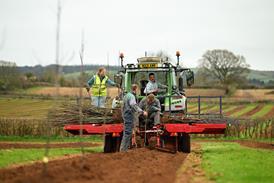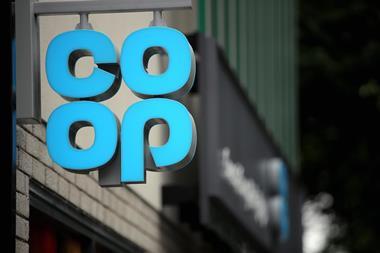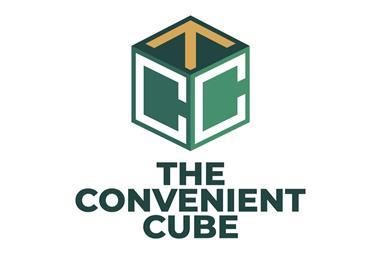Social media are changing the way people interact with brands. Nick Hughes looks at how companies are adapting to the new era
The two jaunty Scottish lads in the grainy YouTube video look as if they're about to launch into a daring skateboard stunt or a death-defying base jump. Until a row of beer glasses comes into focus, followed by a selection of hops and malts, and suddenly it dawns that this may not be another example of Jackass-style high jinks after all .
Beanie-wearing James Watt and his business partner Martin Dickie are in fact the founders of Brewdog, one of a growing number of businesses exploiting the opportunities presented by online social networks.
In their case, the goal was to get the BrewDogs - a loyal band of bloggers and social networkers who have helped turn BrewDog into a nationally listed, award-winning beer brand in just two years - to help create a new beer (see boxout over).
But the potential applications are endless. And after years governed by fear of the damage unfiltered online conversations could wreak on their brands, marketers are finally beginning to get on with online.
It needed an unmitigated success story to budge the floodgates open. Right on cue, along came Wispa. A Bring Back Wispa group on Facebook - supposedly created spontaneously but widely believed to have been driven by Cadbury - snowballed into a full-blown campaign to relaunch the defunct brand. "We'd been aware for quite a long time that there was a desire among people to bring it back," says Frances Dovey, interactive and emerging media manager at Cadbury. "But in 2007, when the Facebook group started, it accelerated things. Social networking sites have given consumers a unified voice."
Cadbury has since ramped up its digital activity. Last year, Creme Egg appeared in Bebo's online drama KateModern, featuring a Creme Egg car and a presenter dressed as an egg. KateModern received 35 million views during its two-year run, making it the most successful show on the web.
Cadbury is not the only one venturing further into social networking. Rare is the fmcg brand that does not have its own Facebook page. Coca-Cola has the second-most popular profile on the site. Cans of Tango are currently reading 'Thanks', where they previously read 'Tango' following a Facebook-driven Save Tango campaign.
Retailers, too, have been getting in on the act. Asda has recently launched its own YouTube channel soliciting money-saving tips from the public, while retailers and brand owners are latching on to the most recent social networking innovation, Twitter, with fervour. Tesco is using the text-based messaging service to inform US customers of new Fresh & Easy store openings and special offers.
This March, drinks brand Whyte & Mackay gave people the chance to hunt down special bottles of whisky in London and Glasgow bars by following a series of clues posted on the site.
BrewDog's Watt is himself a regular Tweeter. One of the great benefits of utilising social networks is the relatively low cost. "The internet is a great leveller in this respect," he says. "Whether you're a big company or a small company, the amount of money you chuck behind it doesn't really matter.
"It's all about the quality of your communications, the relevance of your message. I think people want to see the people behind the product and the internet makes it easy to do that."
Social networking shortens the distance between the brand and the consumer and makes it easier to involve them in a brand's evolution, he adds. "With the traditional model of paying for advertising and media, the consumer's so distant. We want to almost give up ownership of the brand to consumers. We do beer blogs, we let people vote for recipes. There's a lot of dialogue and we ask for feedback, which in itself generates a lot of ideas."
The ability to build a closer, personal relationship with consumers is one of the key advantages over traditional one-way communications, says Joseph Webb, research executive at TNS. "Analogue marketing is all about making people think things so that they do things. Digital media is the other way round. You can now make people do things so that they can think things."
Starbucks' website, mystarbucksidea.com, where consumers can pitch ideas to improve the business, is now available on Twitter. In the first year, 25 ideas were adopted including instant coffee and the return of tea lattes.
"Starbucks may be taking customers' ideas and improving their offer, but they're also improving their own brand image by acting as friends," says Webb. "Brands can really use the online space to connect with people in bigger and better ways."
Though communication feels freer and more interactive online, the medium has its own set of subtleties.
"There are different rules online," says Webb. "Rather than interrupting people in the same way that TV advertising interrupts us while we're watching programmes, online lets people opt in because they choose to do so. You've got to give people good reason to read your messages."
Cadbury's Dovey agrees it is not wise to overtly use digital media to make a sales pitch. "You can't approach this by expecting people to do what you want them to do," she says. "It's about appreciating that people will interact with your brand through various touchpoints . You need to facilitate something, but not lead it. There's a real sense of democracy online. If you're not authentic, you will get found out."
Some brands still use agencies purporting to be individual consumers to infiltrate online conversations, admits Mike Rowe, MD of word-of-mouth marketing specialist 1000heads. "But they always come unstuck in the long run," he adds.
In the short term, it hasn't stopped businesses continuing to use social media in covert ways, however. If online communities are revolutionising how brands are marketed, they're also changing the way they are researched. The millions of blogs, chatrooms and social networks online are a mine of information about how consumers are using and thinking about brands.
"The key advantage is that online conversation is completely unprompted," says Rowe. "It's coming from what people think, what they want to say and passionately believe in. It also helps that people online are self-segmenting, so males who are aged 20 to 35 and like cars will generally cluster together on car forums. The other thing, of course, is that it's real time - so if you launch a product today you know within minutes what people think about it."
Brand owners are taking the hint and trawling the internet for information on how people are interacting with their brands and using this to shape their own communication .
"What we do is understand the consumer through culture rather than the traditional method of trying to get ideas out of consumers' heads," says Nick Gadsby, associate director at Lawes Consulting.
"We'll use discourse analysis to break down into what consumers are saying, what they're needing and identify the phrases they use when talking about brands. From this we can come up with the brand messages and concepts, even things like the colour of packaging, the kind of font that should be used and the kind of images. "
He cites examples of how fmcg companies are seizing upon ideas generated spontaneously by online users. "We did some work for a confectionery company and they were amazed the images we found on photo and video sharing website Flickr were more exciting than the ones they were using in their own marketing material," he says.
"Quite often consumers are doing things that are surprising the brands and impressing them to the extent that they want to copy the ideas themselves. With another client we rewrote the language on their fixtures and promotional material to relate to the way people were talking about their brands online. It was a really passionate language and miles away from the functional language they used in their own marketing material."
Gadsby is keen to stress that social media is virgin territory and as such is still treated with caution by many marketers.
"A lot of brands still have a real fear of social media. They're worried that if they allow people to play in these spaces they are open to abuse. They think the bad thing is the publishing of bad thoughts, but actually it's the thoughts themselves that are the problem and the brands are far better off knowing about them."
Dovey agrees. "We've had conversations in the business over what if such and such is said," she admits. "But it's much better to be involved in it rather than sticking your head in the sand."
Indeed, the latter is no longer an option. In 2006, Time Magazine named "You" - the consumer - as its Person of the Year for "seizing the reins of the global media and beating the pros at their own game".
The pros are fighting back, but will have to get used to being backseat drivers.
The two jaunty Scottish lads in the grainy YouTube video look as if they're about to launch into a daring skateboard stunt or a death-defying base jump. Until a row of beer glasses comes into focus, followed by a selection of hops and malts, and suddenly it dawns that this may not be another example of Jackass-style high jinks after all .
Beanie-wearing James Watt and his business partner Martin Dickie are in fact the founders of Brewdog, one of a growing number of businesses exploiting the opportunities presented by online social networks.
In their case, the goal was to get the BrewDogs - a loyal band of bloggers and social networkers who have helped turn BrewDog into a nationally listed, award-winning beer brand in just two years - to help create a new beer (see boxout over).
But the potential applications are endless. And after years governed by fear of the damage unfiltered online conversations could wreak on their brands, marketers are finally beginning to get on with online.
It needed an unmitigated success story to budge the floodgates open. Right on cue, along came Wispa. A Bring Back Wispa group on Facebook - supposedly created spontaneously but widely believed to have been driven by Cadbury - snowballed into a full-blown campaign to relaunch the defunct brand. "We'd been aware for quite a long time that there was a desire among people to bring it back," says Frances Dovey, interactive and emerging media manager at Cadbury. "But in 2007, when the Facebook group started, it accelerated things. Social networking sites have given consumers a unified voice."
Cadbury has since ramped up its digital activity. Last year, Creme Egg appeared in Bebo's online drama KateModern, featuring a Creme Egg car and a presenter dressed as an egg. KateModern received 35 million views during its two-year run, making it the most successful show on the web.
Cadbury is not the only one venturing further into social networking. Rare is the fmcg brand that does not have its own Facebook page. Coca-Cola has the second-most popular profile on the site. Cans of Tango are currently reading 'Thanks', where they previously read 'Tango' following a Facebook-driven Save Tango campaign.
Retailers, too, have been getting in on the act. Asda has recently launched its own YouTube channel soliciting money-saving tips from the public, while retailers and brand owners are latching on to the most recent social networking innovation, Twitter, with fervour. Tesco is using the text-based messaging service to inform US customers of new Fresh & Easy store openings and special offers.
This March, drinks brand Whyte & Mackay gave people the chance to hunt down special bottles of whisky in London and Glasgow bars by following a series of clues posted on the site.
BrewDog's Watt is himself a regular Tweeter. One of the great benefits of utilising social networks is the relatively low cost. "The internet is a great leveller in this respect," he says. "Whether you're a big company or a small company, the amount of money you chuck behind it doesn't really matter.
"It's all about the quality of your communications, the relevance of your message. I think people want to see the people behind the product and the internet makes it easy to do that."
Social networking shortens the distance between the brand and the consumer and makes it easier to involve them in a brand's evolution, he adds. "With the traditional model of paying for advertising and media, the consumer's so distant. We want to almost give up ownership of the brand to consumers. We do beer blogs, we let people vote for recipes. There's a lot of dialogue and we ask for feedback, which in itself generates a lot of ideas."
The ability to build a closer, personal relationship with consumers is one of the key advantages over traditional one-way communications, says Joseph Webb, research executive at TNS. "Analogue marketing is all about making people think things so that they do things. Digital media is the other way round. You can now make people do things so that they can think things."
Starbucks' website, mystarbucksidea.com, where consumers can pitch ideas to improve the business, is now available on Twitter. In the first year, 25 ideas were adopted including instant coffee and the return of tea lattes.
"Starbucks may be taking customers' ideas and improving their offer, but they're also improving their own brand image by acting as friends," says Webb. "Brands can really use the online space to connect with people in bigger and better ways."
Though communication feels freer and more interactive online, the medium has its own set of subtleties.
"There are different rules online," says Webb. "Rather than interrupting people in the same way that TV advertising interrupts us while we're watching programmes, online lets people opt in because they choose to do so. You've got to give people good reason to read your messages."
Cadbury's Dovey agrees it is not wise to overtly use digital media to make a sales pitch. "You can't approach this by expecting people to do what you want them to do," she says. "It's about appreciating that people will interact with your brand through various touchpoints . You need to facilitate something, but not lead it. There's a real sense of democracy online. If you're not authentic, you will get found out."
Some brands still use agencies purporting to be individual consumers to infiltrate online conversations, admits Mike Rowe, MD of word-of-mouth marketing specialist 1000heads. "But they always come unstuck in the long run," he adds.
In the short term, it hasn't stopped businesses continuing to use social media in covert ways, however. If online communities are revolutionising how brands are marketed, they're also changing the way they are researched. The millions of blogs, chatrooms and social networks online are a mine of information about how consumers are using and thinking about brands.
"The key advantage is that online conversation is completely unprompted," says Rowe. "It's coming from what people think, what they want to say and passionately believe in. It also helps that people online are self-segmenting, so males who are aged 20 to 35 and like cars will generally cluster together on car forums. The other thing, of course, is that it's real time - so if you launch a product today you know within minutes what people think about it."
Brand owners are taking the hint and trawling the internet for information on how people are interacting with their brands and using this to shape their own communication .
"What we do is understand the consumer through culture rather than the traditional method of trying to get ideas out of consumers' heads," says Nick Gadsby, associate director at Lawes Consulting.
"We'll use discourse analysis to break down into what consumers are saying, what they're needing and identify the phrases they use when talking about brands. From this we can come up with the brand messages and concepts, even things like the colour of packaging, the kind of font that should be used and the kind of images. "
He cites examples of how fmcg companies are seizing upon ideas generated spontaneously by online users. "We did some work for a confectionery company and they were amazed the images we found on photo and video sharing website Flickr were more exciting than the ones they were using in their own marketing material," he says.
"Quite often consumers are doing things that are surprising the brands and impressing them to the extent that they want to copy the ideas themselves. With another client we rewrote the language on their fixtures and promotional material to relate to the way people were talking about their brands online. It was a really passionate language and miles away from the functional language they used in their own marketing material."
Gadsby is keen to stress that social media is virgin territory and as such is still treated with caution by many marketers.
"A lot of brands still have a real fear of social media. They're worried that if they allow people to play in these spaces they are open to abuse. They think the bad thing is the publishing of bad thoughts, but actually it's the thoughts themselves that are the problem and the brands are far better off knowing about them."
Dovey agrees. "We've had conversations in the business over what if such and such is said," she admits. "But it's much better to be involved in it rather than sticking your head in the sand."
Indeed, the latter is no longer an option. In 2006, Time Magazine named "You" - the consumer - as its Person of the Year for "seizing the reins of the global media and beating the pros at their own game".
The pros are fighting back, but will have to get used to being backseat drivers.
Asda
In February, Asda launched its own channel on YouTube. Saving You Money TV sees the retailer travel the country asking the public for their best money-saving tips. Last week marked the launch of a new sister channel, George TV, which promises to offer fashion tips "without breaking the bank". "SYM TV is not just about sharing money-saving tips, it's also a hub for people to offer each other advice on how to cut energy bills or reduce food waste. Considering it's only just been launched the reaction we've already had has been staggering," says Asda's chief marketing office Rick Bendel.
BrewDog
James Watt and Martin Dickie were near-penniless graduates when they launched their edgy lagers and ales two years ago. The duo decided to use social media as a way of gaining a foothold in more mature overseas markets. "First we found out who the key beer bloggers in Japan, Sweden, America and Canada were," says Watt. "We befriended them and sent them samples, which they reviewed. Then we approached a company in Sweden and were able to say, 'take a look at the feedback from these three key beer blogs in Sweden'. If we can prove the market's there, it puts us in a stronger position."
Innocent
Innocent is at the vanguard of the social media evolution. The smoothie maker has its own Facebook page and YouTube channel, tweets regularly on Twitter and encourages people to post pop art and photos onto its Flickr page. Co-founder Richard Reed recently even fielded questions on the decision to sell a £30m stake to Coca-Cola in a series of YouTube videos.
Following last year's launch of Innocent veg pots, the company tweaked its recipes as a direct result of complaints posted by vegan bloggers that they could not eat the pots because they contained honey.
Starbucks
Starbucks' website MyStarbucksIdea.com encourages consumers to post suggestions of ways to improve the business. The company reviews and then adopts ideas for everything from new drinks and food to the way the cafés are merchandised and the music they play. Users can now publish ideas on Twitter as well. To date, Starbucks has received more than 16,000 ideas for new coffee products and more than 7,000 ideas for food. One recent post reads: "Please bring back Blueberry White Iced Tea and do not limit it to only a summer item. I was in every day, sometimes twice a day!
Tesco
Tesco's US convenience store Fresh & Easy signed up to Twitter in January to enable it to talk directly with its customers. The US management is using the website to announce new store openings and special offers, as well as answering customer queries and solving problems. In one recent exchange, a customer queried why stock levels were low. Fresh & Easy was able to reply instantly that it was due to seasonal shipping schedules. The Fresh & Easy Twitter page already has more than 2,700 followers. The chain also uses a regular blog on its website to keep customers informed of any activity.
Whyte & Mackay
Whisky brand Whyte & Mackay recently sent its Twitter followers on a Safari Hunt around London and Glasgow. The company posted regular Tweets giving cryptic clues as to the location of its eponymous Red Lions - hidden in pubs around the cities. The lions were placed on each bar, and those who spotted them and touched them could claim prizes, including a 19-year-old bottle of whisky. "Instead of just sending out Twitter updates and blog chats, we wanted to fully embrace the ethos of web2.0 and so the Whyte & Mackay safari hunt was born," says marketing manager Phil McTeer.
In February, Asda launched its own channel on YouTube. Saving You Money TV sees the retailer travel the country asking the public for their best money-saving tips. Last week marked the launch of a new sister channel, George TV, which promises to offer fashion tips "without breaking the bank". "SYM TV is not just about sharing money-saving tips, it's also a hub for people to offer each other advice on how to cut energy bills or reduce food waste. Considering it's only just been launched the reaction we've already had has been staggering," says Asda's chief marketing office Rick Bendel.
BrewDog
James Watt and Martin Dickie were near-penniless graduates when they launched their edgy lagers and ales two years ago. The duo decided to use social media as a way of gaining a foothold in more mature overseas markets. "First we found out who the key beer bloggers in Japan, Sweden, America and Canada were," says Watt. "We befriended them and sent them samples, which they reviewed. Then we approached a company in Sweden and were able to say, 'take a look at the feedback from these three key beer blogs in Sweden'. If we can prove the market's there, it puts us in a stronger position."
Innocent
Innocent is at the vanguard of the social media evolution. The smoothie maker has its own Facebook page and YouTube channel, tweets regularly on Twitter and encourages people to post pop art and photos onto its Flickr page. Co-founder Richard Reed recently even fielded questions on the decision to sell a £30m stake to Coca-Cola in a series of YouTube videos.
Following last year's launch of Innocent veg pots, the company tweaked its recipes as a direct result of complaints posted by vegan bloggers that they could not eat the pots because they contained honey.
Starbucks
Starbucks' website MyStarbucksIdea.com encourages consumers to post suggestions of ways to improve the business. The company reviews and then adopts ideas for everything from new drinks and food to the way the cafés are merchandised and the music they play. Users can now publish ideas on Twitter as well. To date, Starbucks has received more than 16,000 ideas for new coffee products and more than 7,000 ideas for food. One recent post reads: "Please bring back Blueberry White Iced Tea and do not limit it to only a summer item. I was in every day, sometimes twice a day!
Tesco
Tesco's US convenience store Fresh & Easy signed up to Twitter in January to enable it to talk directly with its customers. The US management is using the website to announce new store openings and special offers, as well as answering customer queries and solving problems. In one recent exchange, a customer queried why stock levels were low. Fresh & Easy was able to reply instantly that it was due to seasonal shipping schedules. The Fresh & Easy Twitter page already has more than 2,700 followers. The chain also uses a regular blog on its website to keep customers informed of any activity.
Whyte & Mackay
Whisky brand Whyte & Mackay recently sent its Twitter followers on a Safari Hunt around London and Glasgow. The company posted regular Tweets giving cryptic clues as to the location of its eponymous Red Lions - hidden in pubs around the cities. The lions were placed on each bar, and those who spotted them and touched them could claim prizes, including a 19-year-old bottle of whisky. "Instead of just sending out Twitter updates and blog chats, we wanted to fully embrace the ethos of web2.0 and so the Whyte & Mackay safari hunt was born," says marketing manager Phil McTeer.














No comments yet